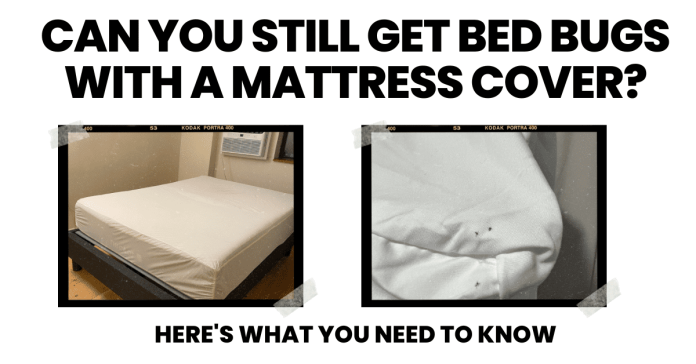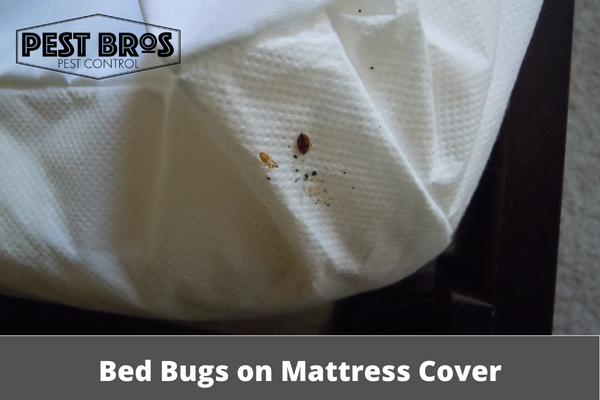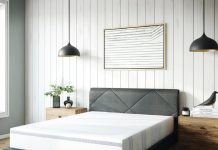Curious about the effectiveness of a mattress protector in keeping those pesky bed bugs at bay? We’ve got the answer you’re looking for. In this article, we explore whether bed bugs can penetrate through a mattress protector, putting your worries to rest once and for all. Stay tuned to discover the truth and ensure a peaceful night’s sleep free from unwanted bed bug invaders.
This image is property of doctorsniffs.com.
Review contents
Understanding Bed Bugs
What are bed bugs?
Bed bugs are small, flat, reddish-brown insects that feed on the blood of humans and animals. They are nocturnal creatures that are primarily active at night when their hosts are asleep. These pests are not known to transmit diseases, but their bites can cause itching, irritation, and discomfort.
How do bed bugs infest mattresses?
Bed bugs are master hitchhikers and can easily infest mattresses through various means. They can unknowingly be brought into your home through luggage, clothing, or used furniture. Once inside, they seek out warm, dark hiding spots, such as the crevices, seams, and folds of mattresses. They reproduce quickly, and a small infestation can quickly grow into a large one.
Common signs of a bed bug infestation
If you suspect a bed bug infestation, there are several signs to look out for. These include waking up with small, itchy red welts or bites on your body, spotting blood stains or dark fecal spots on your sheets or mattress, or discovering shed bed bug skins or eggshells. Additionally, a musty odor, particularly in the vicinity of your mattress, may indicate a bed bug infestation.
Purpose of a Mattress Protector
What is a mattress protector?
A mattress protector is a removable bedding accessory that is designed to encase and cover your mattress. It acts as a protective barrier between your body and the mattress, shielding it from stains, spills, allergens, and even bed bugs. Mattress protectors are typically made of a thin, waterproof material that is breathable yet effective in preventing liquids and moisture from seeping into the mattress.
Why should you use a mattress protector?
Using a mattress protector offers several benefits. Firstly, it helps to prolong the life of your mattress by shielding it from stains, dirt, and wear and tear. Secondly, it provides a hygienic barrier against allergens, dust mites, and bed bugs, creating a healthier sleeping environment. Lastly, a mattress protector can also enhance your overall sleep experience by providing an additional layer of comfort and cushioning.
Types of mattress protectors
There are various types of mattress protectors available in the market, each catering to different needs and preferences. The most common types include fitted mattress protectors, which snugly fit over the mattress like a fitted sheet, and zippered mattress encasements, which completely encase the mattress, providing all-around protection. Additionally, there are also hypoallergenic mattress protectors, cooling mattress protectors, and those specifically designed for cribs or adjustable beds.
Effectiveness of Mattress Protectors
How do mattress protectors work?
Mattress protectors work by creating a physical barrier between your body and the mattress. They are designed to be waterproof, preventing fluids and spills from reaching the mattress and potentially causing stains or damage. Additionally, a mattress protector can also provide protection against allergens, dust mites, and bed bugs. The tightly woven fabric of the protector prevents these microscopic pests from penetrating the mattress, thereby reducing the risk of an infestation.
Do mattress protectors prevent bed bugs?
While mattress protectors are not specifically designed to prevent bed bugs, they can help in reducing the risk of infestation. The tightly woven fabric acts as a deterrent for bed bugs, making it more difficult for them to find harborage within the mattress. However, it is important to note that mattress protectors alone may not provide complete protection against bed bugs, especially if the bed is already infested. They are best used as part of a comprehensive bed bug prevention strategy.
Potential limitations of mattress protectors
It is essential to understand the limitations of mattress protectors in relation to bed bugs. While they can help prevent infestations by creating a physical barrier, they cannot eradicate existing bed bugs or their eggs. Bed bugs are adept at finding alternate hiding spots, such as cracks in the walls or furniture, and can still find their way onto your bed. Therefore, it is crucial to combine the use of a mattress protector with other bed bug prevention methods for optimal effectiveness.
Factors to Consider when Choosing a Mattress Protector
Material
When selecting a mattress protector, consider the materials used in its construction. Opt for a high-quality protector made of hypoallergenic materials that are resistant to both liquids and bed bugs. Look for options that are breathable and provide adequate airflow to enhance your sleeping comfort.
Encasement vs. cover
Decide whether you prefer a mattress encasement or a cover. Encasements offer all-around protection by completely encasing the mattress, while covers provide protection on the top surface only. Encasements are recommended for those with existing bed bug infestations, as they can help trap and isolate the pests.
Breathability
Ensure that the mattress protector you choose is breathable. A breathable protector allows air to circulate, preventing heat and moisture buildup, which can lead to discomfort and the growth of mold or mildew.
Allergen protection
For individuals with allergies or asthma, consider a mattress protector that offers allergen protection. Look for options that are hypoallergenic, dust mite-resistant, and certified to be free of potentially harmful substances.
Ease of use and maintenance
Consider the ease of installation and maintenance when choosing a mattress protector. Look for protectors that are easy to put on and remove, with a secure fit. Furthermore, select a protector that is machine washable and can withstand regular laundering to ensure proper hygiene.
This image is property of cdn-www.terminix.com.
Combining Mattress Protectors with Other Bed Bug Prevention Methods
Regular bed bug inspections and cleaning
To further reduce the risk of bed bug infestations, regularly inspect your mattress, bed frame, and surrounding areas for signs of bed bugs. Vacuum your mattress and furniture regularly to remove any bed bugs, eggs, or fecal matter that may be present.
Encasing the entire bed
Consider using bed bug-proof encasements not only for your mattress but also for your box spring and pillows. By encasing the entire bed, you create a barrier that prevents bed bugs from hiding in these areas and eventually reaching you.
Using bed bug repellents and sprays
When used correctly and in conjunction with other prevention methods, bed bug repellents and sprays can provide an additional layer of protection against these pests. Look for products specifically labeled for bed bug control and follow the instructions carefully.
Proper Installation and Maintenance of Mattress Protectors
Correctly fitting the mattress protector
Ensure that the mattress protector fits your mattress properly. Follow the manufacturer’s instructions for installation, paying attention to any specific sizing requirements. A snug and secure fit will ensure maximum effectiveness and prevent the protector from shifting or bunching up during use.
Cleaning and washing instructions
Regularly clean and wash your mattress protector according to the manufacturer’s instructions. Most mattress protectors can be machine washed and dried on low heat. By maintaining proper cleanliness, you prolong the lifespan of the protector and ensure optimal hygiene.
When to replace a mattress protector
The lifespan of a mattress protector can vary depending on its quality, frequency of use, and maintenance. However, it is generally recommended to replace your mattress protector every two to five years, or sooner if it becomes damaged or shows signs of wear and tear. Regularly inspect the protector for tears, frayed edges, or weakened seams, and replace it if necessary.
This image is property of www.thepestbros.com.
Alternative Bed Bug Prevention Strategies
Chemical treatments
Chemical treatments, such as insecticides or bed bug sprays, can be utilized to control bed bug infestations. However, it is important to exercise caution when using chemical treatments, as they can be harmful if not used correctly. It is advisable to consult a professional exterminator or follow the instructions on the product packaging for safe and effective use.
Heat treatments
Heat treatments involve exposing infested items or areas to high temperatures, usually above 120°F (49°C), to kill bed bugs and their eggs. This method is particularly effective for eradicating bed bugs in mattresses and other upholstered furniture. It is recommended to hire a professional pest control service for a safe and thorough heat treatment.
Professional extermination services
When dealing with a severe or persistent bed bug infestation, it may be necessary to seek professional extermination services. Professional exterminators have the expertise and resources to effectively eliminate bed bugs using a combination of methods, tailored to the specific situation. They can provide detailed inspections, treatment plans, and ongoing monitoring to ensure complete eradication.
FAQs about Bed Bugs and Mattress Protectors
Can bed bugs bite through a mattress protector?
No, bed bugs cannot bite through a properly installed and undamaged mattress protector. The tightly woven fabric acts as a physical barrier, preventing the bed bugs from reaching your body.
Can bed bugs live inside a mattress protector?
While it is unlikely for bed bugs to live inside a mattress protector, they can still hide in the seams and folds of the fabric. Regular inspections and maintenance, combined with other prevention methods, are necessary to detect and eliminate any potential bed bug presence.
Can mattress protectors trap bed bugs inside?
If the mattress protector is properly installed and fully encases the mattress, it can indeed trap any existing bed bugs inside. However, this should not be solely relied upon as a bed bug control method, as it does not eliminate the infestation entirely.
Do mattress protectors kill bed bugs?
Mattress protectors alone do not have the ability to kill bed bugs. Their primary function is to prevent bed bugs from infesting the mattress and protect it from stains and spills. To effectively eliminate bed bugs, a combination of treatments, such as heat or chemical treatments, along with thorough cleaning practices, is necessary.
How often should a mattress protector be replaced?
The lifespan of a mattress protector can vary depending on its quality and usage. However, a general guideline is to replace your mattress protector every two to five years, or sooner if it becomes damaged or worn out. Regularly inspect the protector for any signs of wear and tear and replace it as needed to maintain its effectiveness.
This image is property of organic-comfort.com.
Conclusion
In conclusion, while mattress protectors serve as a valuable tool in preventing bed bug infestations, they are not foolproof. When combined with regular inspections, cleanliness, and additional bed bug prevention methods, mattress protectors can significantly reduce the risk of bed bugs infesting your mattress. However, it is important to remain vigilant and proactive in combating bed bugs, as they are resilient pests that require comprehensive control strategies. With the right combination of prevention methods and proper maintenance of a mattress protector, you can create a safe and comfortable sleeping environment, free from the nuisance of bed bugs.
























